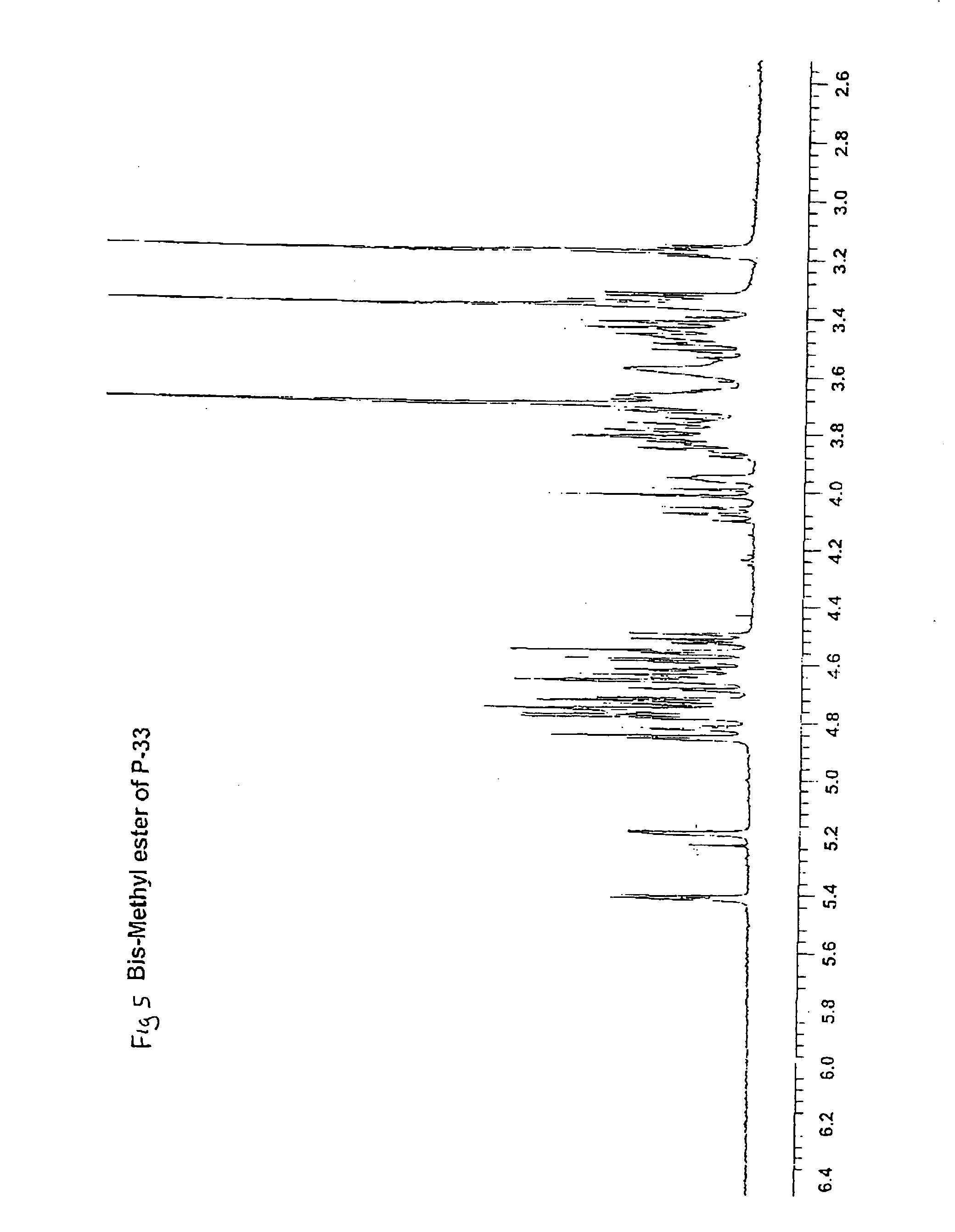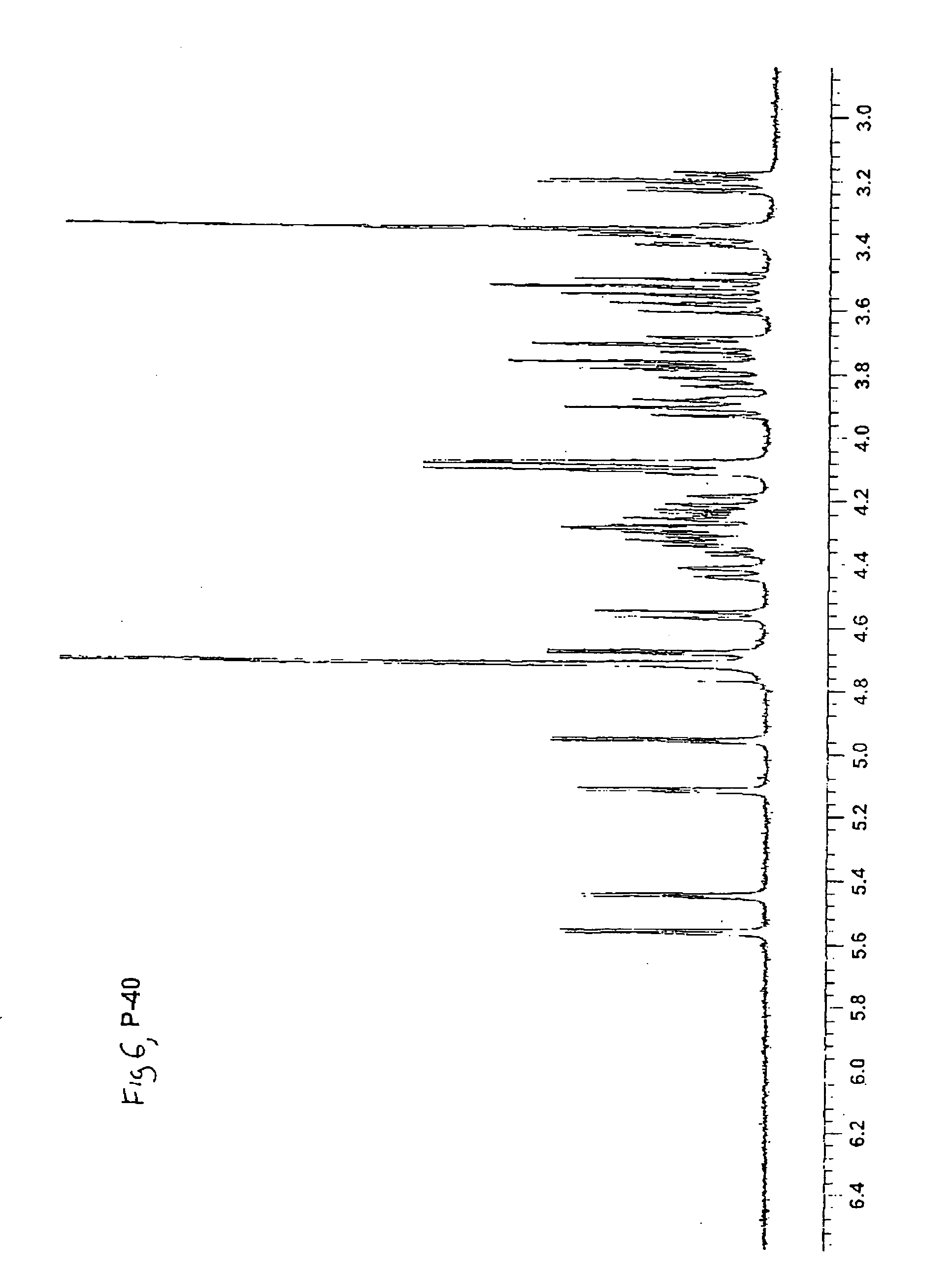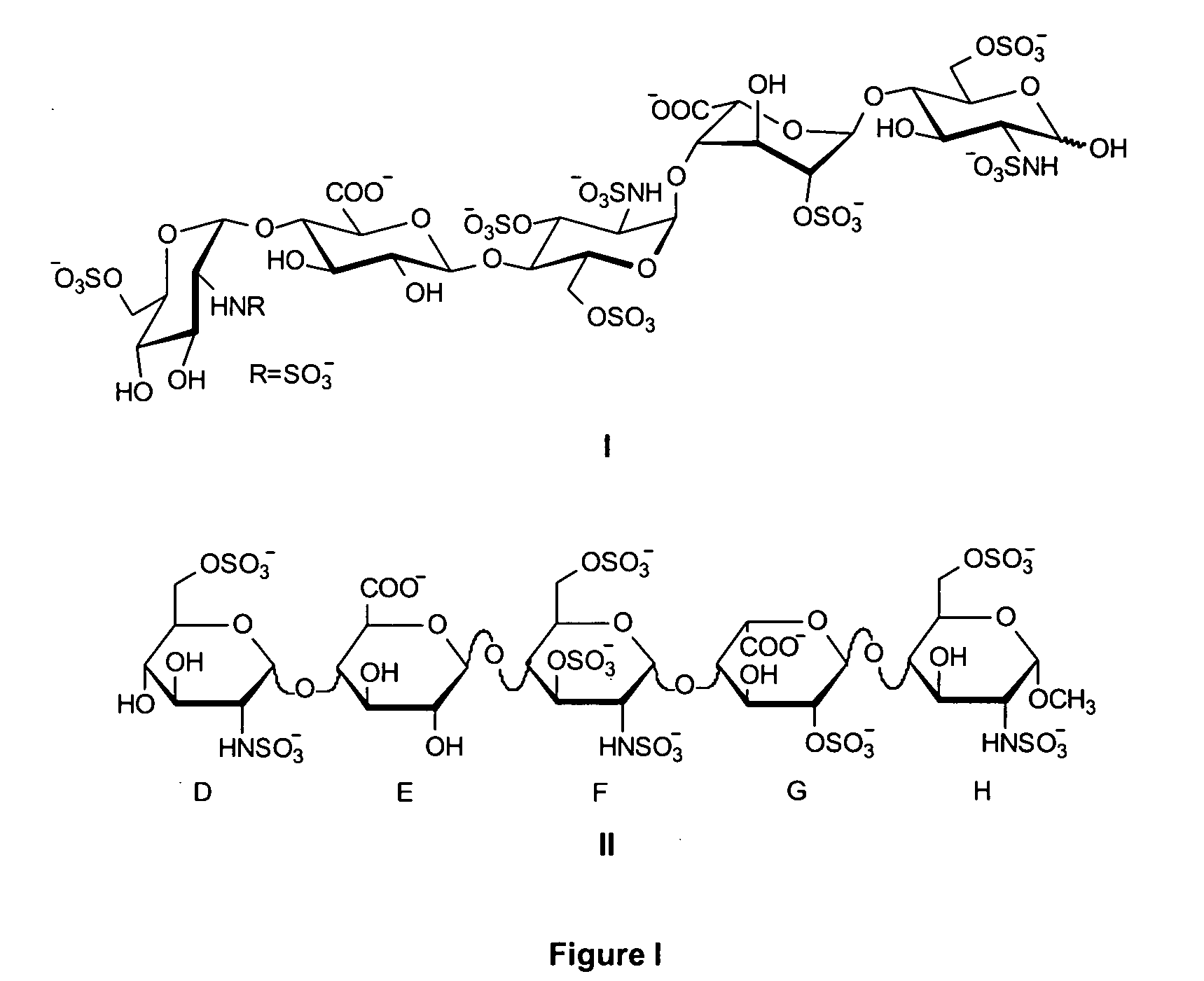Synthetic heparin pentasaccharides
- Summary
- Abstract
- Description
- Claims
- Application Information
AI Technical Summary
Benefits of technology
Problems solved by technology
Method used
Image
Examples
example 2
of building block A-3 and A-4, conditions: a) SOP 7, (72% for R=H); b) SOP 4, (82%); c) SOP 17, (84%); d) SOP 5.
Compound A-3:
1H-NMR (400 MHz, CDCl3): δ=10.16 (dd, 1H, JNH,2=9.4 Hz, JNH, ═C—H=14.0 Hz, NH), 8.11 (d, 1H, ═C—H), 7.68-7.22 (3m, 8H, Aryl), 4.84 (d, 1H, J1,2=3.5 Hz, H-1α), 4.83 (dd, 1H, J6a, 6b=12.3 Hz, J5,6a=3.5 Hz, H-6a), 4.73 (d, 1H, Jgem=11.7 Hz, OCH2), 4.46 (dd, 1H, J5,6b=2.1 Hz, H-6b), 3.91 (m, 1H, H-5), 3.72 (dd, 1H, J3,4≈J2,3=8.8 Hz, H-3), 3.57 (ddd, 1H, J4,5=9.5 Hz, H-4), 3.48 (s, 3H, OMe), 3.38 (ddd, 1H, J2,3=10.5 Hz, H-2), 3.32 (s, 3H, NMe), 3.31 (s, 3H, NMe), 3.05 (bs, 1H, 4-OH).
example 3
Synthesis of L-ido Configured Glycosyl Donor B-1
Example 3: Synthesis of Building Block B-1, conditions: a) SOP 7, (95%); b) 60% aqueous Acetic acid, 60° C. (90%); c) Methanesulfonyl chloride, Pyridine, 0° C.-RT (87%); d) Cesium Acetate, Ac2O, 120° C. (95%); e) SOP 22, (92%); f) 1.90% TFA, 0° C.; 2. Ac2O, Pyridine; 3. SOP 31, (73%, 3 steps); g) SOP 22, (98%); h) SOP 3, (92%); i) SOP 18, (98%); j) 80% acetic acid, 100° C. (98%); k) SOP 26, (89%); I) SOP 23, (98%).
Preparation of B-1-iii:
B-1-ii (15.60 mmol) was dissolved in 60% aqueous acetic acid (50 ml) and stirred at 60° C. until completion. After neutralization with solid NaHCO3, the mixture was evaporated and co evaporated with toluene. Crude B-1-iii was dissolved in CHCl3 / H2O, the organic layer separated, dried over Na2SO4 and evaporated. The remaining residue was purified by a short silica gel chromatography to yield B-1-iii in 90% (4.43 g).
Preparation of B-1-iv:
17.72 mmol of B-1-iii was dissolved in 25 ml dry pyridine, ...
example 4
of L-ido configured glycosyl donor B-2; a) SOP 2; b) SOP 18; c) SOP 5; d) SOP 23.
EXAMPLE 5
Synthesis of Building Block C-1, C-1a and C-1b
PUM
 Login to View More
Login to View More Abstract
Description
Claims
Application Information
 Login to View More
Login to View More - R&D
- Intellectual Property
- Life Sciences
- Materials
- Tech Scout
- Unparalleled Data Quality
- Higher Quality Content
- 60% Fewer Hallucinations
Browse by: Latest US Patents, China's latest patents, Technical Efficacy Thesaurus, Application Domain, Technology Topic, Popular Technical Reports.
© 2025 PatSnap. All rights reserved.Legal|Privacy policy|Modern Slavery Act Transparency Statement|Sitemap|About US| Contact US: help@patsnap.com



